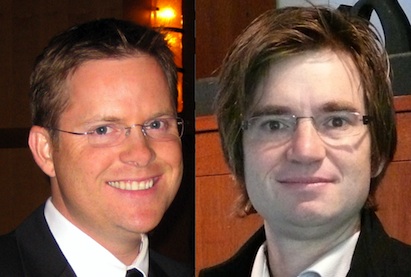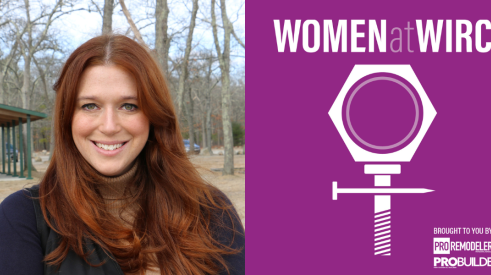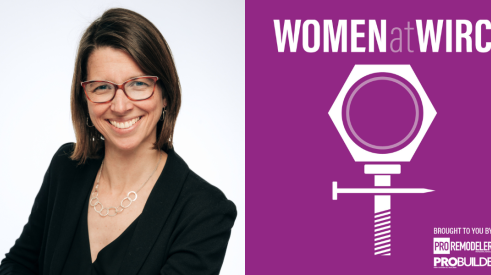Professional Remodeler’s Jud Motsenbocker talked to remodelers Daniel Glickman and Michael Winn about their experience in multifamily remodeling. Excerpts of the conversation appear here. To listen to the full discussion, click here.
Jud Motsenbocker: Why have you found they are doing this work? Are they renovating these things into different types of apartments or what?
Daniel Glickman: There are many different reasons why people do work. It depends on the neighborhood and the market segment. The majority of calls that we get for multi-unit buildings are for rental units. They’re renting it, they’re going to rent it, or they see themselves living there for a very short time. They’re very much geared toward return on investment.
Michael Winn: The niche that we’ve found is exterior renovations, Generally, the catalyst is that it’s a conversion — either from condo to apartment or apartment to condo — or simply, it’s a maintenance item and it’s coming out of community funds for property maintenance.
Motsenbocker: How did you get started in this?
Winn: The first project that we did, back in 1998, they found us. We were the preferred remodeler for HardiePlank. It was a large project — six buildings, seven stories tall. It … had aluminum siding that was blowing off and they wanted to redo the entire exterior of the property.
That was a big first step for us. Fortunately, it went very well, and we came in on time and on budget. We didn’t need to learn any hard lessons on that project.
Motsenbocker: Michael, were you hesitant about going into that project because you’d never done it before?
Winn: Absolutely, absolutely. I had grave reservations. Our contract was somewhere around $6.4 million, which was more than we were doing in business annually at the time. If it didn’t go well, it could have taken us down with it.
Motsenbocker: Daniel, how did you get started?
Glickman: We started working in the city with a home office, so that’s where we were naturally trying to get work. There are many issues working in high-rises in the city that are very, very different. A lot of people don’t want to work in the city at all, so starting out it was a good place to start because you get the more difficult projects that nobody else wants to bid on.
Motsenbocker: Are you working through engineers or architects or are you going directly to the owners?
Glickman: We work directly with the owners. They find us through our regular marketing.
Motsenbocker: How has the lead law affected you? Has it caused any problems?
Glickman: No. When you’re working in a condo, if you don’t budget for a lot of protection and clean-up in common areas, for sealing off your work, if you’re not going to work to those levels of standards, you’re going to get in big trouble. So you better be equipped for that and budget for that time and material. The lead law doesn’t really change or add on to that at all. There’s a little more paperwork, etc.
Winn: In a roundabout way, but not directly. Since the lead law has been implemented, we haven’t encountered any lead on any of the multifamily projects we’re doing. If there is lead present, it’s discovered generally during the engineer review process, so it’s written into the specifications of the project.
Motsenbocker: Daniel, I want to go back to you because you’re working downtown. I’ve heard some horror stories working in your environment. Just list some of the things that you want to make sure are on your checklist.
Glickman: The biggest issues are not the ones you anticipate and you plan for. It’s important to spend the time before the contract is signed looking into them. They include things like not just whether or not there’s parking, but what the terms and conditions of parking are. Other things include access and keys … oftentimes there is a shared key and those cannot be replicated. Generally speaking, having a dedicated project manager for these projects is key. Things like elevator use — many times there is a service elevator, but it has to be scheduled 24 hours ahead of time. That’s a big deal. Those are all questions to ask.
Motsenbocker: What are some of the unusual things you run into that are on your checklist for exterior work?
Winn: Some of them are, of course, situational. In general, we always request … that there be an owner-designated representative. It’s difficult enough as you go through the bid process, it’s decision by committee, usually, and that’s a challenge in and of itself. Once you get into construction, that becomes an unworkable situation if everything needs to go to multiple parties, so usually we request that the engineer and one member of the board be designated as an owner rep. On our side, we have a single designated project manager, again minimizing the
numberof people that are being touched with information. That keeps confusion to a minimum.
Motsenbocker: When you’re going over three stories, do you have a safety training program for those guys? Who gets charged for that? Do you include it as a job cost or is that part of overhead?
Winn: It’s part of our overhead and the engineer will usually request that a copy of our safety training program be provided. It’s forced us to formalize our program. We had a safety program previously, but it wasn’t as formal a program. Since we’ve been working in multifamily, it’s forced us to take a harder look at that.
Motsenbocker: How’s the sales process different?
Glickman: I wouldn’t say it’s considerably different. The process itself is the same. You just have to understand the costs better. We’re design/build, so we basically ask people what their budget is and if we can do work for that budget, we sign a contract with them and design to that budget. For us it’s a pretty straightforward process.
Winn: Both of those, for us, are a consultative process. In design/build we’re dealing directly with the homeowner, whereas in multifamily we’re usually dealing with an engineer or a board consisting of owners or tenants. That makes it a bit different. In either case, we’re trying to position ourselves as the experts. In some instances where an engineer wasn’t involved and we dealt directly with a community, it is very much the same as a design/build process, I would say.
Motsenbocker: Who are you dealing with on a day-to-day basis?
Winn: I’m usually dealing with a combination of an engineer and/or a board. Sometimes the board will have a property manager. In some cases I may be dealing with that person as well. There are multiple parties, and each one has a different set of requirements. When we’re dealing with the engineer, it’s just like in remodeling when you’re working with an outside architect. You want to make that architect look good and foster that relationship. We want to make sure it never becomes an us/them relationship.
With the property manager, it’s the same sort of thing. You still want to make him look good. You’re going to be working with him closely throughout the project and these projects are sometimes six months, eight months, a year long, and that’s a long time to be working with someone you got off on wrong foot with.
Glickman: Obviously, we deal with the homeowners, the clients. In addition, there’s typically a management company, but not always. There’s also the condo trust, which in some cases is very active and they will want to come see the place and inspect it. In many cases, we have to deal with neighbors. When we work in smaller buildings we very often discover we have to go into the neighbor’s unit because it’s the only access to what we’re trying to do, or there isn’t a shut-off that separates the water from the two units.
Motsenbocker: Have you found that it’s easier to work with these people than an individual owner?
Glickman: Working in condos is far more difficult. There’s no question about it. We really like working with homeowners. We enjoy that emotional connection and we do it well. I dread having to work with a board or various committees.
Winn: Certainly, I’ll say that my preference would not be to ever have to deal with a community board. I would much, much prefer deal with an engineer than a homeowner or a community board. They speak our speak, we’re on the same page from day one, they’re not emotionally invested in the project.
Remodeling rental and multifamily buildings can be a good way to expand your business. At the same time, the model presents new challenges as well.
Add new comment
Related Stories
How to Create a World-Class Remodeling Team
Great remodeling companies position themselves for the future with the right players
Everyone Should Have a Number: KPIs for Your Design Build Team
Measuring key performance indicators guides your team to success while creating accountability and ownership
How to Revamp Your Pre-Construction Process
Experiencing too much slippage and delays? See how Bridget Bacon of Red House Design Build solved these issues by improving the remodeler's pre-construction process
How This Remodeler Revamped Their Pre-Construction Process
Bridget Bacon of Red House Design Build outlines how she helped transform the pre-construction process for improved finances and morale
Building A Small Projects Division from the Ground Up
Through hard work and careful strategy, Harth Home Services has seen big growth
A Mindset of Serving Others
A research study shows surprising results about what makes us take ownership of our work.
3 Keys to Successful Team Management
On this episode of Women at WIRC, hear Laura Burnes delve into her approach to leadership and project management, in addition to sharing insights into Adams + Beasley Associates' winning culture.
4 Steps to Prep Your Business for Contraction
How a remodeling company plans ahead for the worst of times (and the best of times)
Helping Remodelers 'Get Their House In Order'
From remodeler to NARI executive to industry consultant, Diane Welhouse uses her expertise to help business owners













